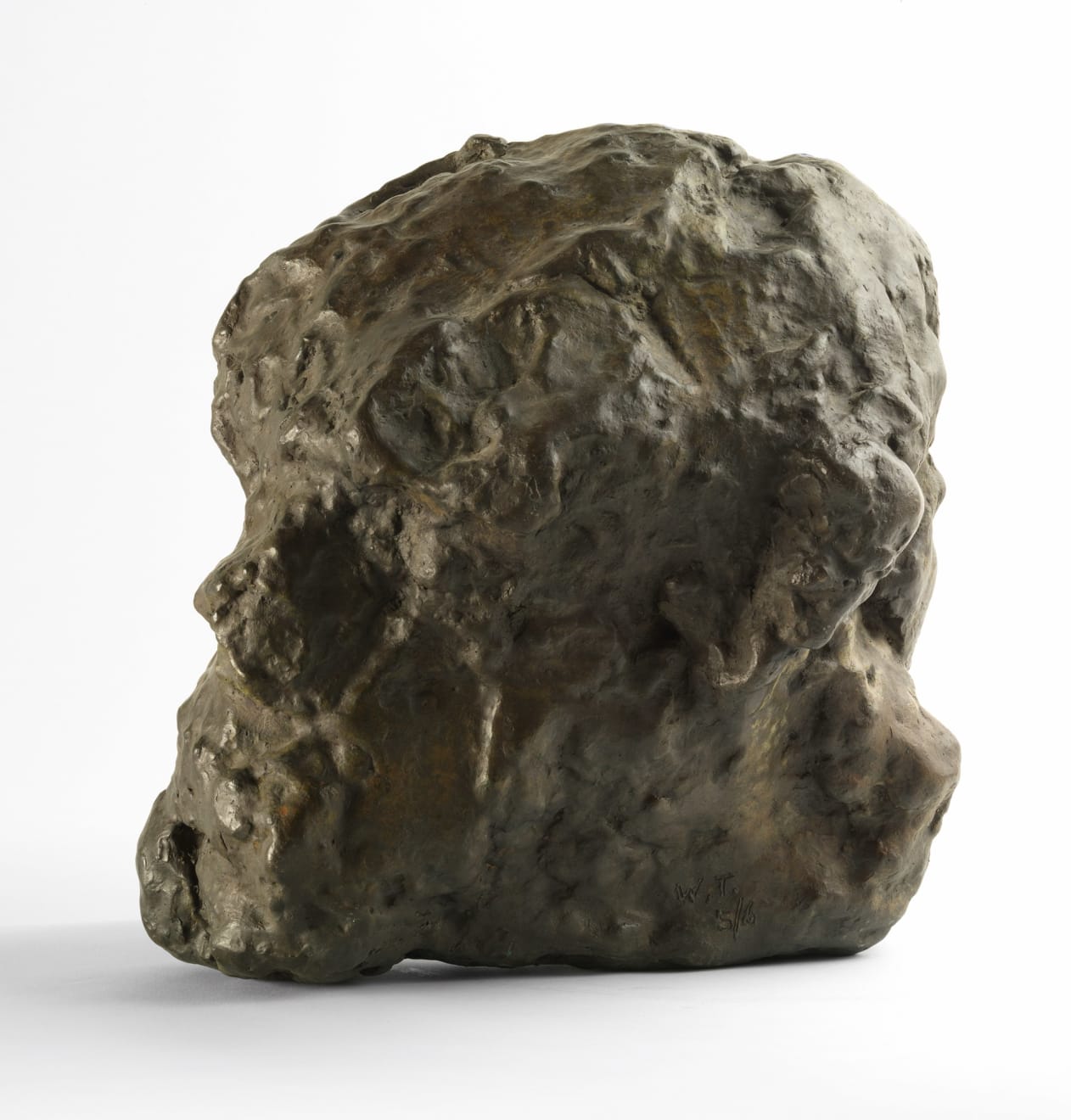William Tucker RA b. 1935
The Good Soldier, 1997
Bronze
25 x 52 x 23 cm
9 7/8 x 20 1/2 x 9 1/8 in
9 7/8 x 20 1/2 x 9 1/8 in
Edition 5 of 6
Courtesy of the Artist/ Pangolin London
Currency:
William Tucker was born in Cairo in 1935 and moved to England with his family in 1937. He studied history at Oxford University and during this time attended classes at...
William Tucker was born in Cairo in 1935 and moved to England with his family in 1937. He studied history at Oxford University and during this time attended classes at the Ruskin School of Drawing, along with R B Kitaj, Jonathan Kingdon and John Updike. Between 1958-60 he studied sculpture at St Martin’s Schools of Art under the maverick leadership of Frank Martin and Anthony Caro. Fellow students included David Annesley, Phillip King and Michael Bolus, all of whom were included in the influential New Generation exhibition at the Whitechapel Art Gallery, London in 1965. Tucker’s innovative early sculpture presented abstract forms in painted steel or fiberglass and placed directly on the ground. Typically, his works of the 1960s consist of repeated geometric elements assembled into abstract configurations, with colour used to articulate outline and volume. In 1966 Tucker’s Meru series was included in the seminal exhibition Primary Structures at the Jewish Museum in New York and in 1972 Tucker represented Britain at the Venice Biennale. His highly successful book The Language of Sculpture was first published in 1974 and evolved from a series of lectures he gave whilst he was Gregory Fellow in Sculpture at the University of Leeds (1968-70). Moving to New York in 1978, Tucker established his reputation with a series of sculptures directly modelled in plaster and cast into bronze, at first abstract like the steel forms from which they had developed, but increasingly suggestive of the human figure in their massive presence. He has found a unique balance between the figurative and the abstract, with truly powerful results. The way these sculptures stand or rest on the ground, and the way they address the onlooker, the ambiguity of their reference to the human figure brings the possibility of a new kind of figuration in sculpture in which the image emerges from both an inner perception of the body and an outer perception of volume and surface. These works appeal to both touch and sight, suggesting at once part of the body and the whole body, but resisting conclusive definition. In the late 1970’s Tucker taught at Columbia University, and the New York Studio School. He received a Guggenheim Fellowship in 1981 and the National Endowment for the Arts fellowship in 1986. He currently lives and works in Massachussetts, USA and was awarded the Lifetime Achievement Award from the International Sculpture Centre in 2010.
Provenance
From the artistExhibitions
William Tucker: Unearthing the Figure, 2014; William Tucker: Sculpture and Drawing, 2010
William Tucker: Portraits, Pangolin London, 13 March - 20 April 2023
Literature
William Tucker: Unearthing the Figure, 2014; William Tucker: Sculpture and Drawing, 2010
Publications
William Tucker: Unearthing the Figure, 2014; William Tucker: Sculpture and Drawing, 2010
